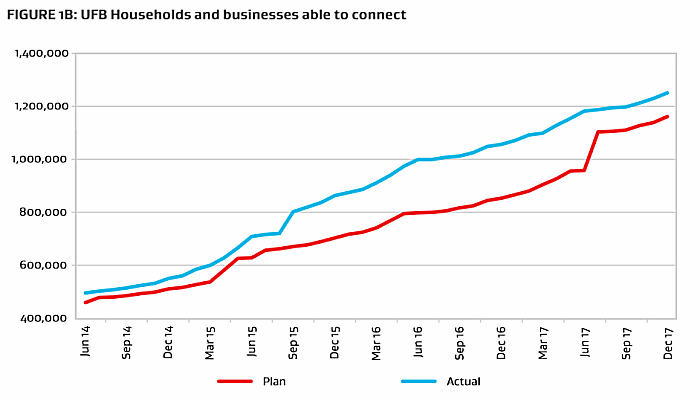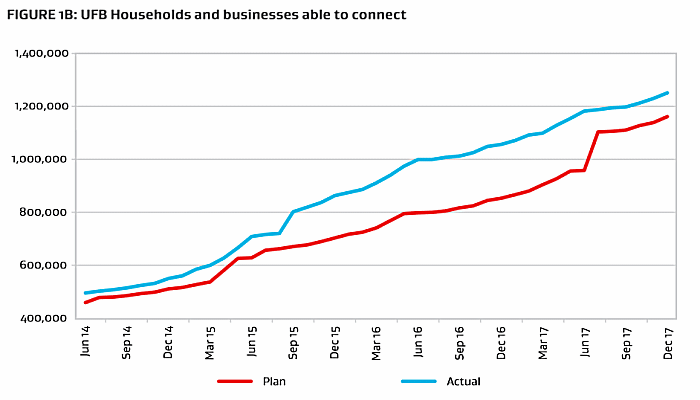At least 506,075 premises in New Zealand had connected to ultra-fast broadband (UFB) via FTTP by the end of December last year, enjoying speeds close to 1,000 megabits per second (Mbps).
According to Broadcasting, Communications and Digital Media Minister Clare Curran, more than 1.25 million households and businesses in the country can now access UFB, with 40 per cent of that number having connected. This puts the rollout well ahead of schedule.
 Image: Broadband.govt.nz
Image: Broadband.govt.nz
"By the end of 2022, 87 per cent of Kiwis in 390 towns and cities will be able to connect to fibre broadband," said Minister Curran at the end of last month.
As of August last year, NZ $1.8 billion of investment (around AUD $1.68 billion at current exchange rates) had been ploughed into New Zealand's UFB infrastructure.
So how does New Zealand, with its population just shy of 5 million, compare to Australia (pop: ~24 million) in terms of FTTP?
NBN Co's Corporate Plan for 2017-2020 puts the number of Australian premises connected to FTTP at 2.5 million by 2020.
Comparing Australia to New Zealand is a bit of an apples-to-oranges scenario, with this wide brown land being so much larger than the land of the long white cloud, but many Australians may envy what's happening across the ditch. Some have argued NBN Co's reasons for not rolling out FTTP on a much broader scale to be a little misleading.
Australians were also recently told that the maximum speed most of us will need out to 2026 will be just 49 Mbps.
According to New Zealand's Government, the country should be in the top five in the OECD for the proportion of the population that can access FTTP once the rollout is complete. NZ has its sights set on making ICT (Information and Communications Technology) the second biggest exporting sector by 2025.
In addition to the Ultra-Fast Broadband (UFB) programme in New Zealand, the government is also rolling out the Rural Broadband Initiative (RBI) and the Mobile Black Spot Fund (MBSF). 300,000 rural households and businesses are already able to access new or improved broadband services and the second phase of RBI will enable an additional 70,000+ access to high speed connectivity.
The RBI initiative is being delivered through a mix of fixed line upgrades and new fixed wireless internet.
Closer to home, fixed wireless technology is also a part of what Lightning Broadband deploys to deliver services to Australian residential customers, offering speeds of up to 100 Mbps for stand-alone wireless broadband customers. For apartment residents, where fibre is run to the building, plans of up to 200 Mbps are available. Lightning Broadband's business solution is able to deliver up to 1,000 Mbps through direct fibre.



